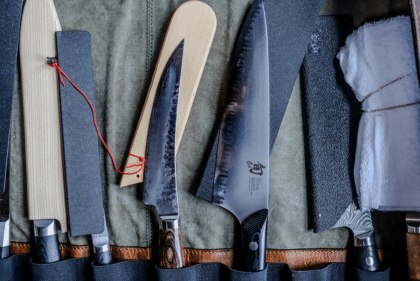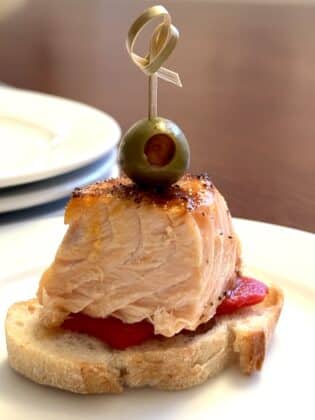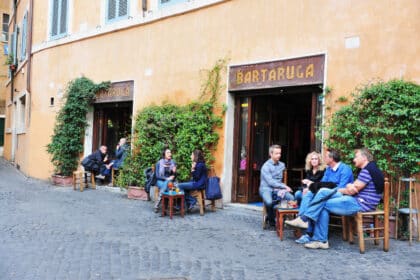Venturing into Edible Landscaping
Although I am an accomplished flower gardener, when it comes to edible landscaping, I’m a novice. My green thumb used to turn a sad shade of black when I entered the kitchen. But the times they are a’changin’!
With concerns about water conservation, wildlife preservation, the decline of bees and other pollinators that are vital to food production, and the world’s exploding population, the horticultural industry is desperately trying to get homeowners to rethink their landscapes. We all need to play a part in creating more habitat friendly landscapes as well as growing our own food. We can do this, one backyard, front yard and condominium deck at a time.
As a sought-after flower garden designer, I have always worked with plants that not only look stunning in the landscape month after month, but are also environmentally friendly. The specimens require less water and fertilizer, plus they support biodiversity and are attractive to pollinators. For years I have wholeheartedly embraced the ornamental plants-with-a-purpose trend. Now I’m moving on to growing my own food and becoming a better cook.
I’ve jumped on the produce wagon and started growing veggies in my flower gardens and in containers at my little condominium in Kennebunk, Maine. But after doing some research, I’ve discovered that some of my eye-catching, pollinator-friendly, flowering perennials are also edible. Their beauty is not “skin deep,” they also have value as a food source. Hey, you can have your daylily and eat it too!
Before first sampling an ornamental plant, be sure that the portion you plan to ingest is verified by experts as edible. Then it’s important to take only a nibble to make sure you don’t have an allergic or otherwise poor reaction to it. Also, never eat plants that have been treated with pesticides (but you’re not using these, right?).
Here are some exceptional perennials that are both eye-candy and delicious.
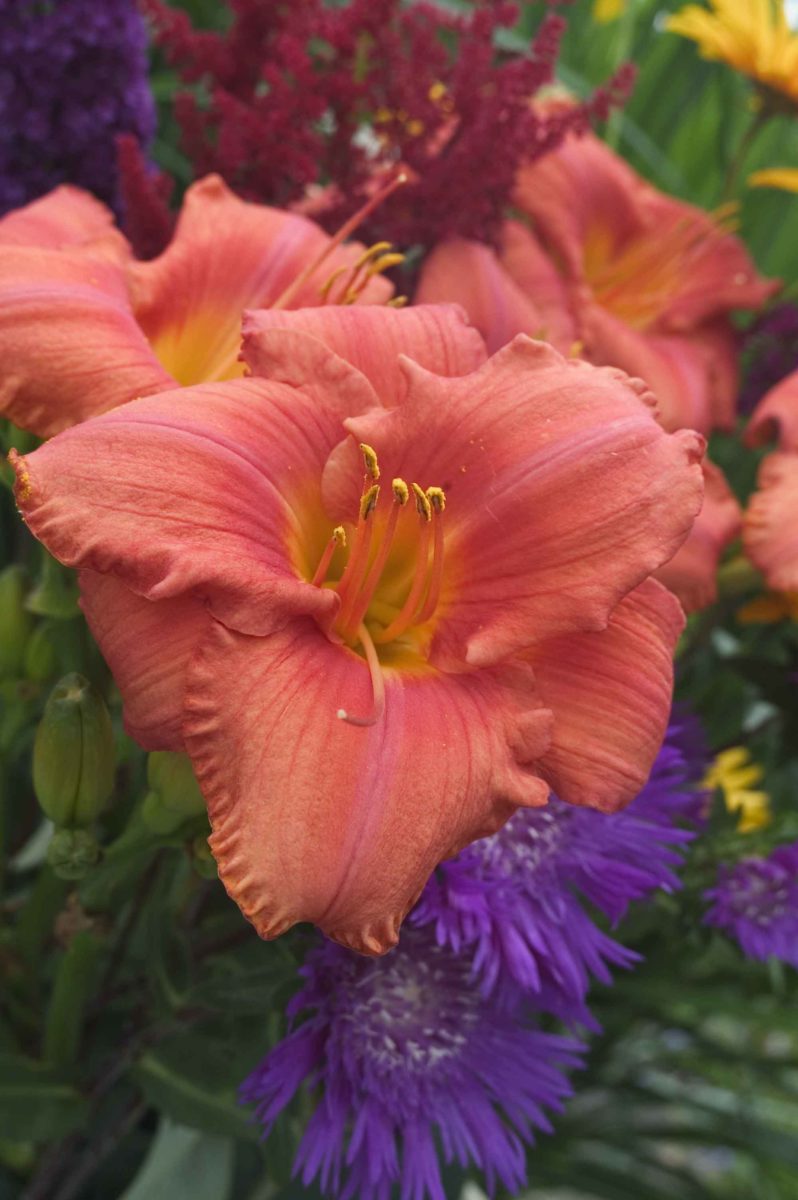
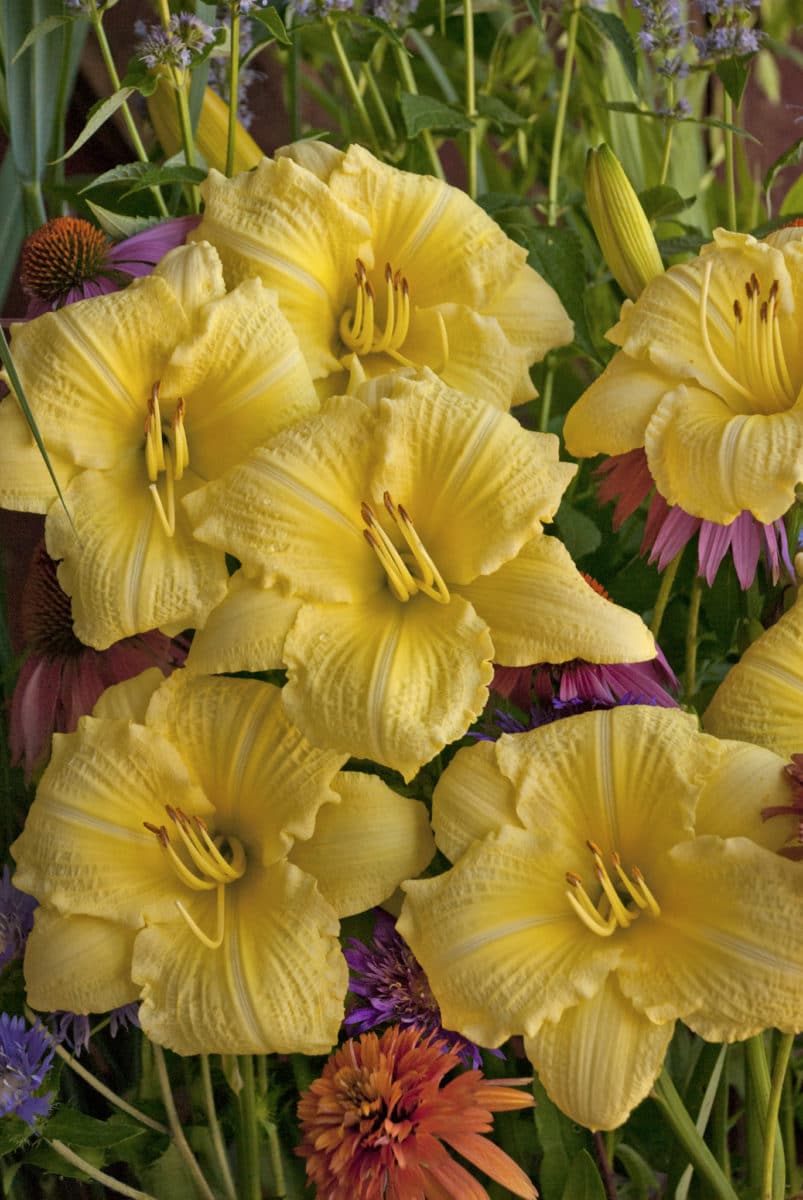
Daylily (Hemerocallis)
Gardeners have been nibbling daylily petals for years (so have deer!) Unopened buds can be used in recipes that call for green beans as they have similar flavors. Many compare the taste of these flowers to butter lettuce. Be sure to only eat the petals and remove the flower’s bitter green base. Daylily buds make a nice addition to salads and soups or can be dipped in batter and deep-fried. To double your harvest, plant repeat blooming daylilies that send forth two, sometimes three, rounds of budladen stems through the growing season. Some of my favorites are Custard Candy (creamy-yellow with a maroon band); Going Bananas (canary yellow); Sunday Gloves (near-white with a pale yellow eye, fragrant); South Seas (coral-tangerine, fragrant) and Earlybird Cardinal (watermelon red).
Hosta (Hostaceae)
Who would have guessed that deer aren’t the only ones that find hosta leaves irresistible? The Japanese have been safely consuming hosta for centuries. The young rolled-up foliage tends to be the tastiest. Toss the tender leaves of smaller varieties in a frying pan with some sesame oil and light soy sauce and let the feasting begin. Although all species appear to be edible (remember to try a little nibble first!), H. montana and sieboldii are most commonly devoured. The flowers are also a delicacy, especially those in the plantaginea family. Not only do these taste sweet, they also smell heavenly! For some fascinating recipes featuring hosta, check out the blogs Hostas are Edible! and Hosta: a Treat for the Eye and the Palate. A few of my choice hosta picks within the above-mentioned species are: H. montana Aureomarginata (breathtaking vase-shaped hosta with yellow margin and dark green center), H. montana Frosted Jade (large jade-green leaves with white margin); H. montana On Stage (yellow center with rippling green margin) and H. sieboldii Kabitan (narrow ruffled leaves with gold center and green margin).
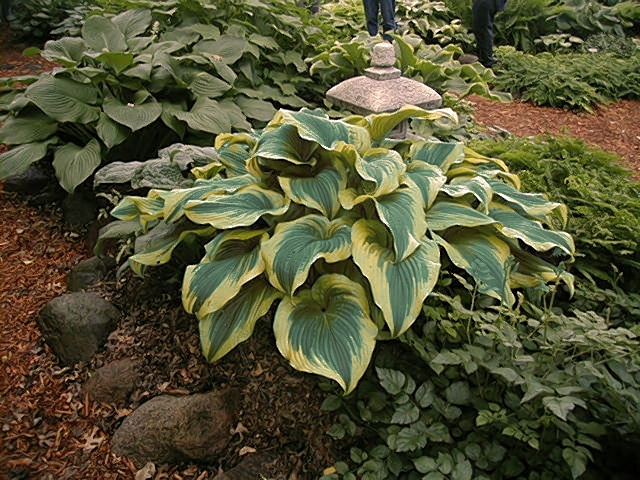
Hyssop (Agastache)
If you’re looking for a bee magnet, look no further. Hyssop is an aphrodisiac for many pollinators–you had better duck as they swarm for the nectar and pollen buffet. Just delightful, not only for pollinators but also for our palates. Both the flowers and leaves can be used for salads as well as teas. This superhero perennial blooms from July into the fall and thrives on neglect—spare the water and fertilizer! I am a fan of Agastache Blue Fortune (powder-blue flowers), Black Adder (violet-blue flowers with dark purple buds) and Bolero (rosepurple flowers). All hyssop demand full sun and soil with fast drainage.
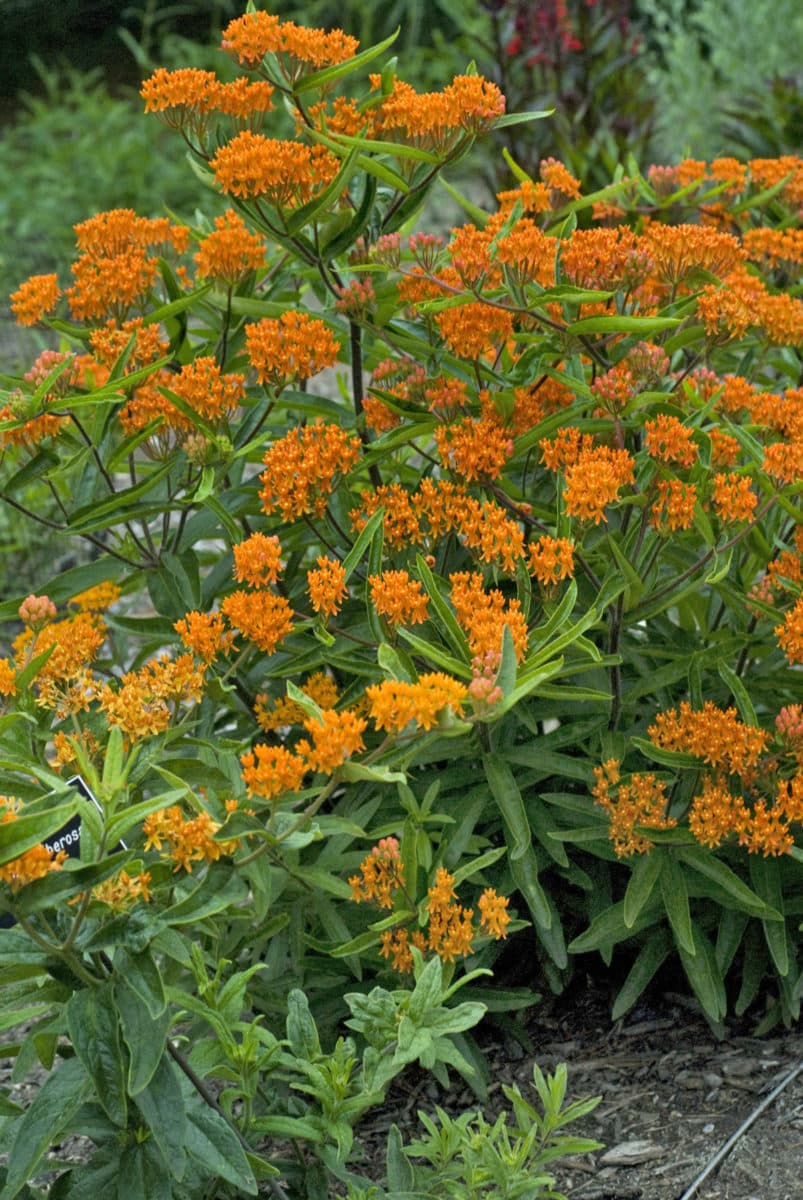
Butterfly Weed (Asclepias tuberosa)
Yum! Both for Monarch butterflies (and other pollinators) and for us. This native perennial’s flowers can be eaten right off the plant or cooked. Many say the cooked flowers taste like sweet peas. This beauty is in my garden but I have yet to sample it—I can’t bear to remove any of the electric orange blooms! If orange isn’t your color, then try growing Hello Yellow that sports bright yellow blooms or Gay Butterflies that has a mix of fiery red, yellow and orange flower clusters. The leaves are also tasty and are akin to spinach when cooked, though I prefer to leave the foliage for the caterpillars of Monarch butterfly to munch. All butterfly weed in the tuberosa species love hot, sunny spots with sharp drainage. To discover more fascinating facts about butterfly weed, including medicinal uses, check out Georgia Native Plant Society’s page at https://gnps.org/poy/plantofyear2010.php.
Some other enlightening resources that are chock-full of unusual snacks found in our gardens and landscape are Backyard Foraging, a book by my good friend Ellen Zachos, and a web site called Eat the Weeds, managed by Green Deane. I also get a kick out of HGTV garden’s web section on foraging.
Now as I stroll through my beautiful perennial gardens, the task of deadheading has taken on a whole new meaning! ![]()

